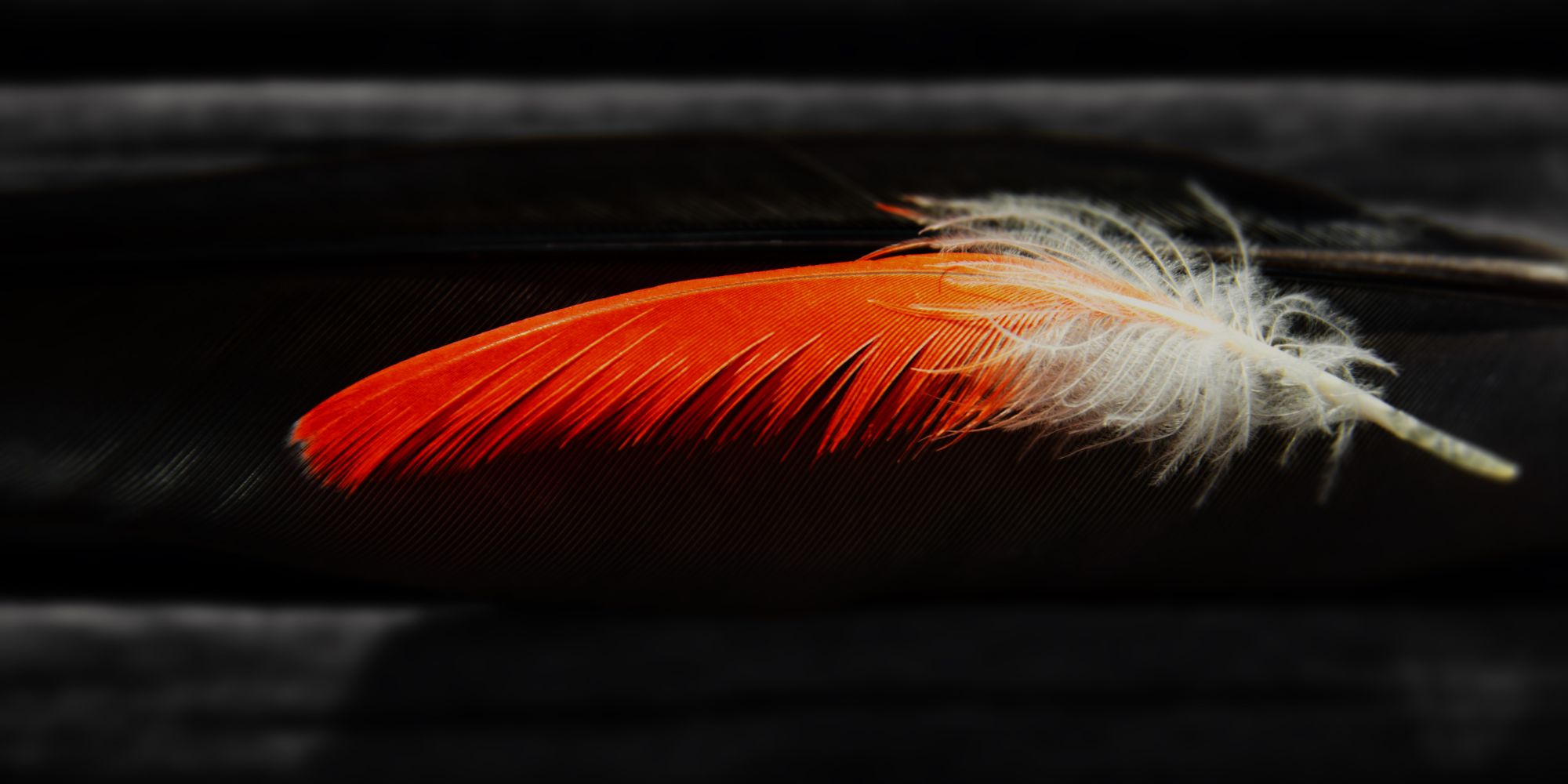
Running Commentary 10/13/2025
Hello,
Usually I give birding updates up here but I’ve spent a lot of my time recently birding compared to reading or watching things, and I have really nothing of my normal things to talk about here, so…
Anyway...
Birding...
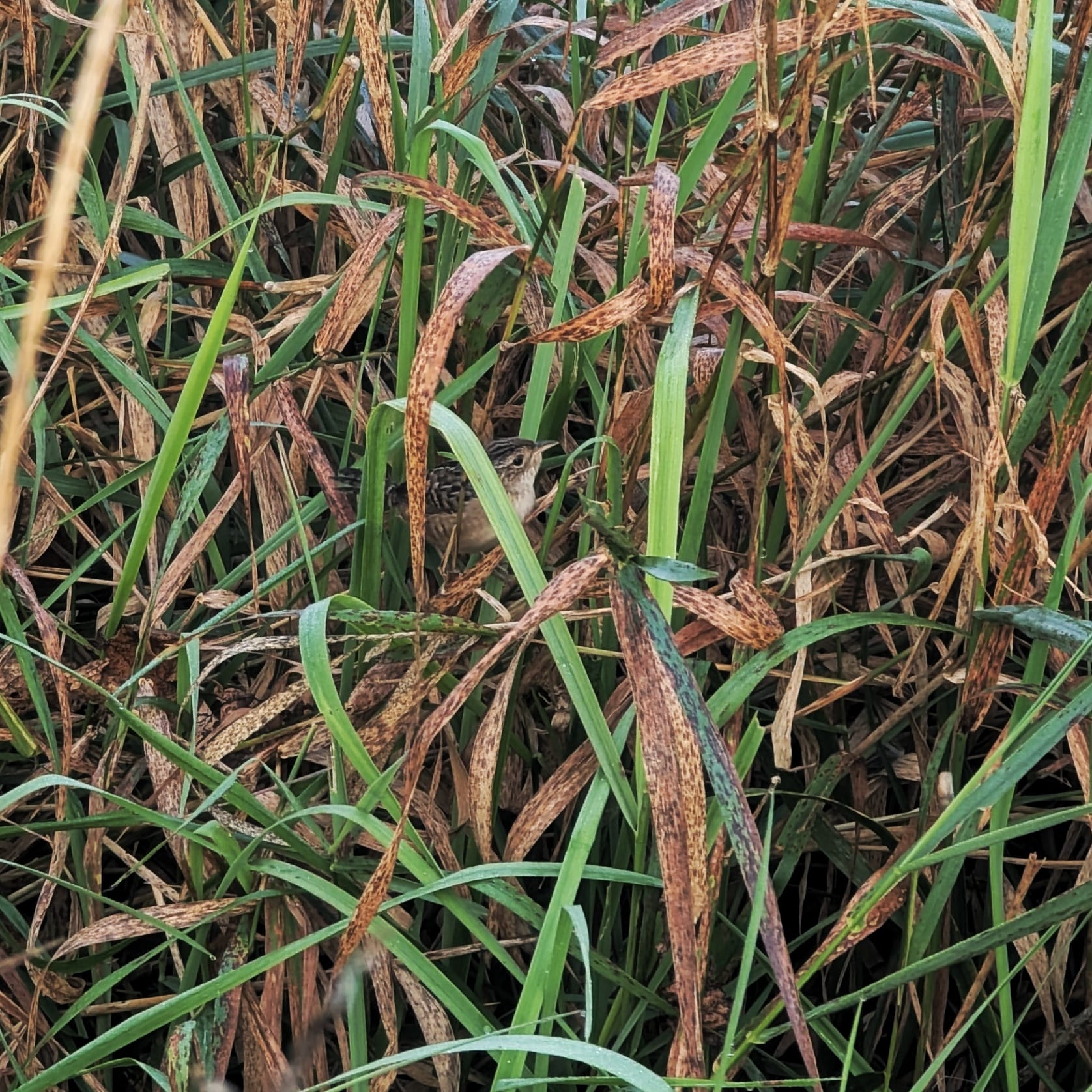
A sedge wren I saw on the October ‘25 Big Day.
This past Saturday I saw three species new to me. It was eBird’s October Big Day, when they were encouraging people to get out and report birds passing through on Fall migration. I went a few places around town to see what I could find. In a few of these there wasn’t much of anything, but I did find some birds regardless. In a preserved marsh I found a sedge wren (pictured), the first of the three new species and the last species I needed to complete the set of wrens with a Michigan range. This wren was really quite friendly, sitting in a thatch of grass near a bench and getting so close to me that sometimes I couldn’t get a focus on it through my binoculars. This was one of my top bird encounters this year, besides being a new species.
Also in that marsh I found a pair of rusty blackbirds (which similarly completed my list of Michigan icterids, so long as I don’t count the western meadowlarks which reportedly are here in very small numbers) and a huge flock of robins. Now, robins are not generally an exciting thing to see when out birding; I like robins fine but I can easily see them in my yard or, indeed, pretty much anytime I’m outside. But there were possibly more than a thousand robins in this marsh; when I first arrived so many were flying around and perching on every available perch that I thought they were starlings. I’m guessing these were Canadian robins migrating down for the winter.
I went a few other places, including a municipal walking park where I found my third new bird that day: an orange-crowned warbler. This is a consistent but rare migrant through Michigan; generally this is a bird that lives out west. Merlin Sound ID alerted me to it and I found it crawling around in a bush, where this species is usually found. I didn’t get a photo of this one I’m afraid, but I got several good looks at it before it flew off.
As always, my birding excursions get recorded in my birding log.

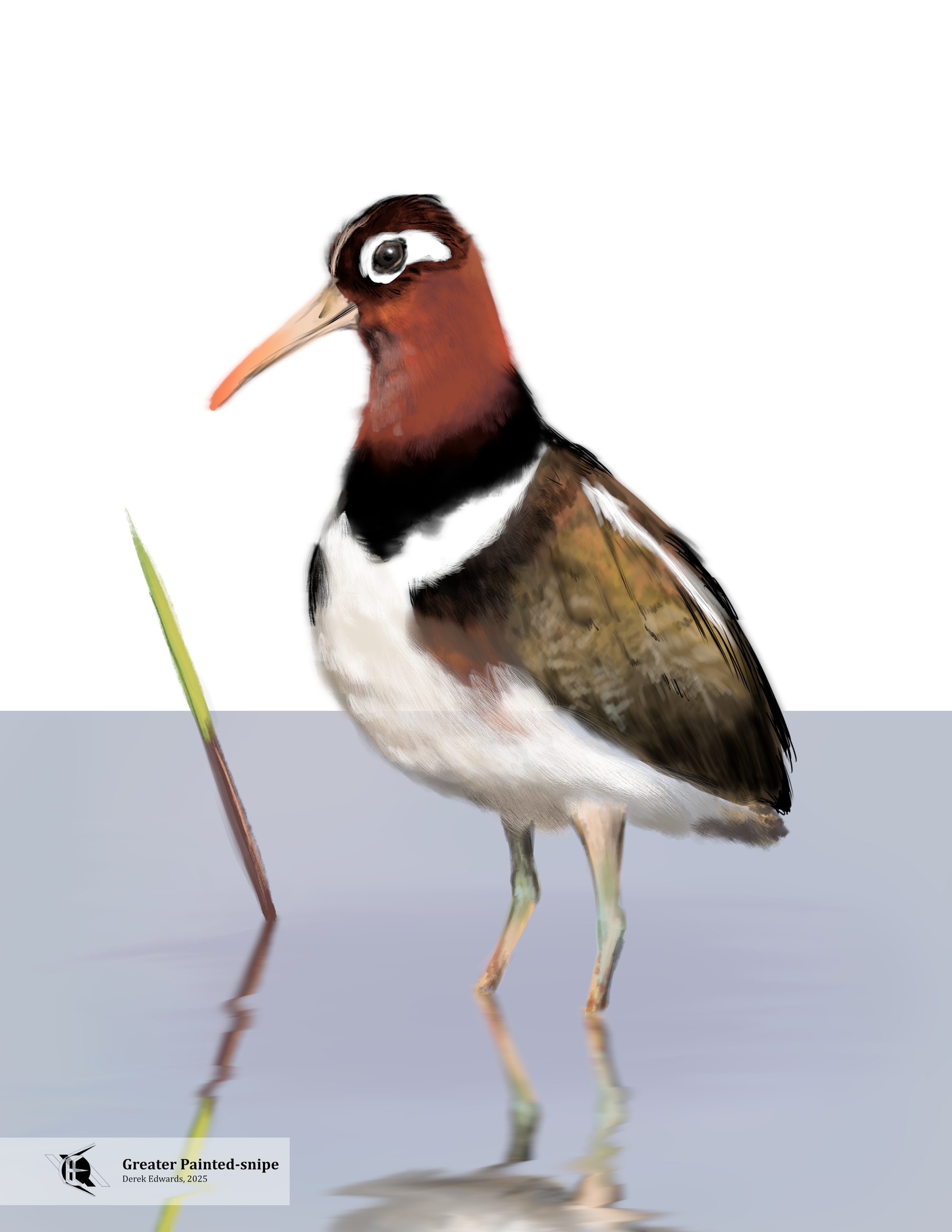
Bird of the Week
Sometimes I’ll see a bird and draw it. Sometimes I’ll draw some exotic bird I haven’t seen but think is worth doing for other reasons. This week I’m drawing an exotic bird because I saw a different bird. The other day I saw some Wilson’s snipes flying over a marsh pond. I could draw a Wilson’s snipe to commemorate that moment—but it’s just not a very interesting-looking bird, and with all the spots and speckles, it would be a tedious pain to draw besides. Moreover, someday I want to draw a woodcock, which looks quite similar, so I’d feel like I was repeating myself. But I did want to write about the snipe. So here’s a kind of snipe (or at least a kinda-snipe) that I think is interesting-looking, even if it’s not the one I saw. It’s not the Wilson’s snipe; it’s the greater painted-snipe.
The painted-snipes are arguably not really snipes. They belong to their own small family of three species, rather than being part of the broader sandpiper family like the true snipes. But they’re all part of the same order, and they’re mud-probing shorebirds like the true snipes. Painted-snipes are mainly tropical birds. The greater painted-snipe lives throughout sub-Saharan Africa and the warmer, wetter parts of Asia. The Australian and South American painted-snipes live in parts of their namesakes. Like the phalaropes, painted-snipes are unusual for having much more striking-looking females than males. Female greater painted-snipes, like the one I’ve drawn, have deep reddish-brown heads and necks with contrasting black-and-white markings. Males are a cryptically-mottled that would somehow be even more of a pain to draw than a Wilson’s snipe. The females are also much larger than the males. Female painted-snipes will attract and mate with multiple males, then leave them to incubate the nest, establishing multiple nests in a season.
Now, some of you might be thinking I’ve made up another bird. “Snipes aren’t real,” you might say. “They’re just something people made up to trick gullible campers into spending all night in the woods.” No, snipes are real. Painted-snipes are real. But snipes are also a made-up thing, in certain contexts. Let’s talk about snipe hunts. Snipes do get hunted. Snipes are skittish, so they must be hunted from a concealed position by a skilled marksman. British soldiers metaphorically called concealed sharpshooters “snipers” because they’d hunt enemies like they were snipe, and the term stuck.1 But when you hear about a “snipe hunt” nowadays, it’s not literal. It’s a reference to a particular kind of fool’s errand.
“Fool’s errand” is a term often used for any endeavor that seems obviously doomed to failure. But properly, it refers to a prank usually given as a rite of passage to someone new to a profession—sending them to perform some nonsensical task they don’t yet realize is nonsense. For instance, a new shop assistant in a manufacturing space might be sent to fetch a “metric adjustable wrench.” This sounds like a real item; there are metric wrenches and adjustable wrenches. But of course, there’s no such thing as a “metric adjustable wrench,” because an adjustable wrench can fit metric bolts just as easily as English ones. The new worker will eventually realize this, hopefully without embarrassing themselves by asking for help, but initially, they’ll search for the nonexistent item. Hence the joke.
The snipe hunt is similar, but for hunters—or, in modern America, for kids out camping. Some kid who doesn’t know any better is told their campground is full of snipes. Sometimes these are described as a kind of bird, more often as a kind of squirrel-type mammal. Hunting snipes is said to be a team effort and requires skill—except for the “bagger.” That’s the newbie’s role: all they have to do is stay still in the brush holding a bag and using some odd bait, maybe whistling or making some kind of snipe call, while the others go flush the snipes toward them. When the snipes come by, the newbie just has to grab one in the bag. But of course, there is no such thing as a snipe, and the others are actually back at the campfire, trying to guess how long the newbie will stay out in the brush before they give up and come back.
Familiarity with snipe hunts has left many Americans inoculated against the knowledge that there are real birds called snipes. It’s not clear how the fictional prank quarry got the name of the actual bird. We do know that the bird’s name goes back to Middle English and is much older than the prank.2 Perhaps the difficulty of hunting real snipes inspired the name of the impossible snipe hunt—or perhaps the two terms are unrelated. In any case, snipes are real birds. I’ve seen some with my own eyes. And you’d have little chance of grabbing one in a bag, even under cover of dark.
To science, the greater painted-snipe is Rostratula bengalensis. The genus name means “long-billed,” which I suppose painted-snipes are, though true snipes have proportionally much larger bills. The species name references Bengal, the eastern part of India where Europeans first described the bird.3
- Eymonline, s.v. “sniper” accessed October 13, 2025, https://www.etymonline.com/word/sniper
- Merriam-Webster.com Dictionary, s.v. “snipe,” accessed October 13, 2025, https://www.merriam-webster.com/dictionary/snipe.
- Jobling, J. A. (editor). The Key to Scientific Names in Birds of the World (S. M. Billerman et al. editors), Cornell Laboratory of Ornithology, Ithaca.
Curation Links
Solving the longitude puzzle | Martina Miotto & Luigi Pascali, the Journal of International Economics
“The chronometer, one of the greatest inventions of the modern era, allowed for the first time for the precise measurement of longitude at sea. We examine the impact of this innovation on navigation and urbanization. Our identification strategy leverages the fact that the navigational benefits provided by the chronometer varied across different sea regions depending on the prevailing local weather conditions. Utilizing high-resolution data on climate, ship routes, and urbanization, we argue that the chronometer significantly altered transoceanic sailing routes. This, in turn, had profound effects on the expansion of the British Empire and the global distribution of cities and populations outside Europe.”
The Guilty Vicarage | W.H. Auden, Harper's
Essay on detective stories, examining the typical trappings thereof and why they must be so. Detective stories are almost as form-bound as haiku, and that’s how readers like them. The detective story is a fantasy of goodness restored to the world by a person’s diligent actions.
The New Explosive Theory About What Doomed the Crew of the 'Hunley' | Rachel Lance, Smithsonian Magazine
“A blast-injury expert takes aim at the mystery of what sank the most famous—and lethal—submarine of the Civil War”
Let Me Feel Your Pulse | O. Henry, Library of America
[FICTION] O. Henry’s final published story, inspired by his own poor health at the end of his life. Library of America here provides a worthwhile introduction to the story.
See the full archive of curations on Notion


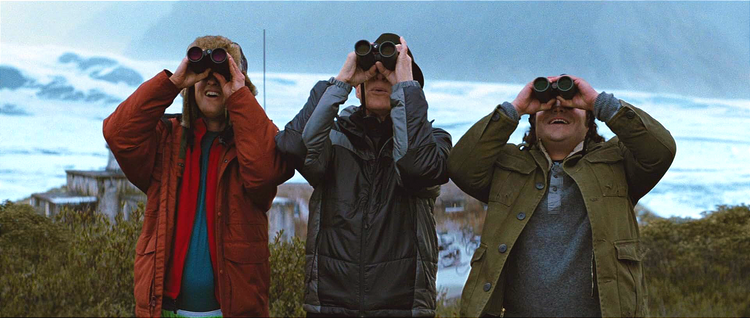
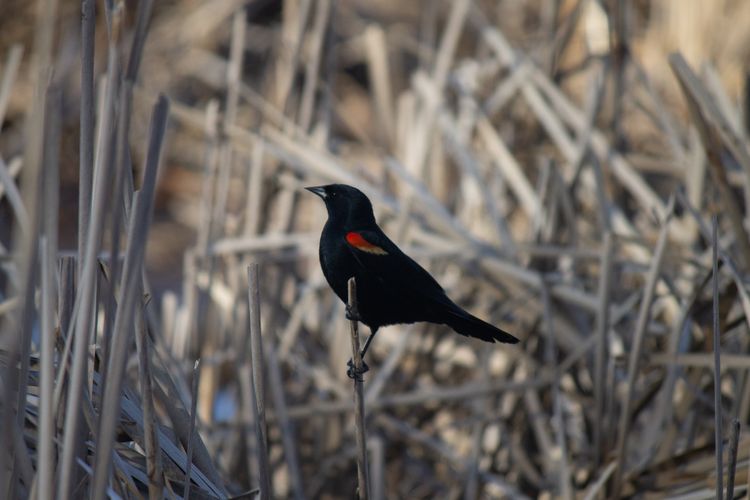
Member Commentary